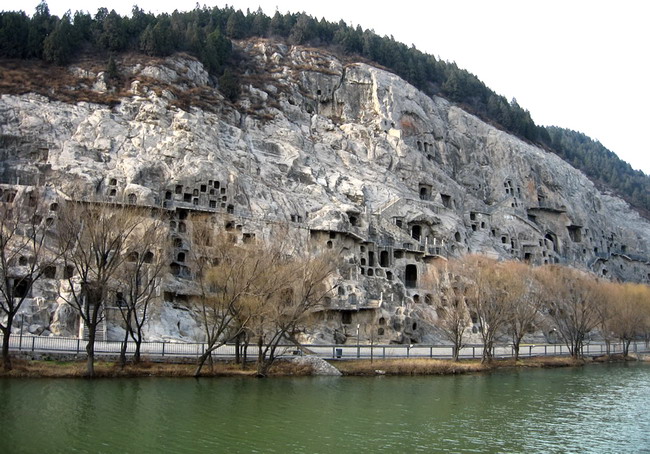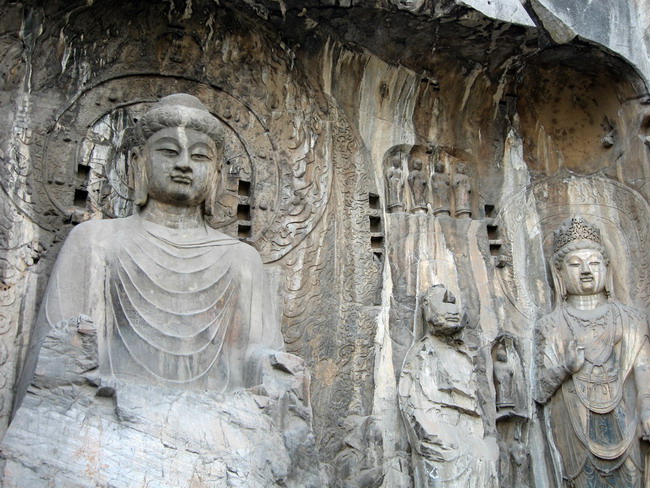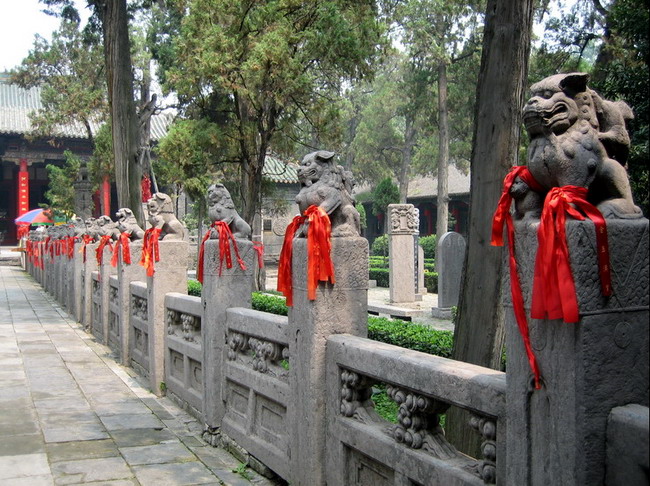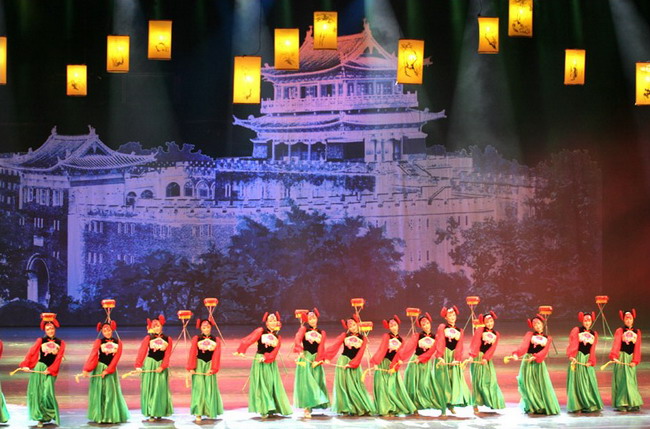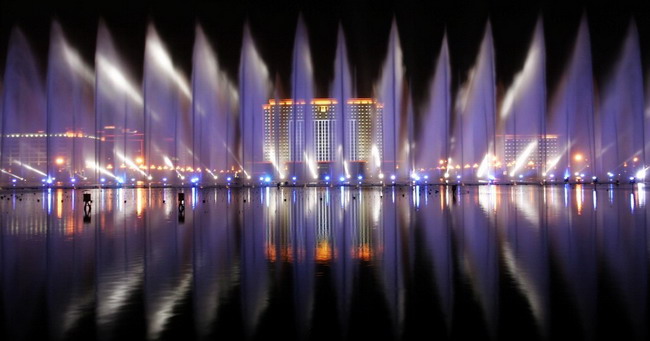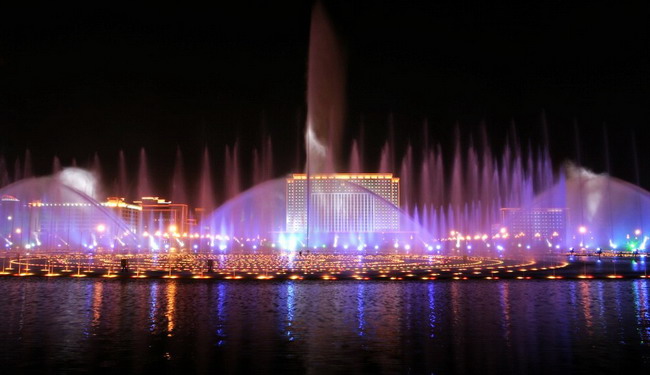Boyz Are Great, Every Girl Should Have One Your position:Home->china tour-> One of the top four ancient cities:Luoyang The most prosperous period of Luoyang was in the Sui and Tang dynasties with a population of more than one million. Known as the oriental start of the "silk road", it had wide political, economic, cultural exchanges with countries of Europe, North Africa and Asia. The ancient capital Luoyang also boasts rich humanistic cultures. The fables about Fuxi, Nuwa, Yellow Emperor, Tangyao, Yushun, Xiayu in ancient China were mostly originated from here; the generation and development of traditional Chinese cultures: Confucianism, Buddhism, Daoism, are closely related with Luoyang; the Book of Changes and The Eight Diagrams were generated here; Laotze wrote the Daoism here; Confucius once asked the ceremony here; The Historical Book of Han Dynasty and Comprehensive Mirror for Aid in Government were complied here; Zhang Heng invented Armillary Sphere and Seismograph here; and the great poets Du Fu and Li Bai left their ever-lasting poems here. The rich and abundant historic culture of Luoyang has done its contribution to the Chinese nation and also leaves endless wealth and relic sites for the following generations to visit and ponder on the past. Luoyang Longmen Grottoes is one of the three art treasures of the Chinese stone inscription; the first temple Baima Temple was the first temple built after the introduction of Buddhism into China and reputed as "Shiyuan" and "Zuting" of China's Buddhism; the Mangshan in the north has the largest ancient tomb cluster in China shaped since East Zhou Dynasty and more than 400 thousand precious cultural relics have been excavated here and the first ancient tomb museum in the world has been built here. In addition, Luoyang is also famous for its three colored glazed pottery of the Tang Dynasty, Luoyang peony, Heluo Peculiar Stone (Yellow River Peculiar Stone), Luo embroidery and the Guanlin, one of the three famous Guandi Temples in China. The ancient capital of China was one of the important cradles of Huaxia civilization. Thirteen dynasties made Luoyang their capital, namely, the first dynasty Xia, Shang, Western Zhou, Eastern Zhou, Eastern Han, Cao Wei, Western Jin, Northern Wei, Sui, Tang, Late Liang, Late Tang and Late Jin. It had been the dynastic capital for approximately 1,500 years. Among the ancient capitals, Luoyang was the one with the earliest capital founding, the most dynasties and the longest period. This thousand-year-old imperial capital experienced the alternation of dynasties and the change of times, and witnessed the success and failure of the emperors and heroes, e.g. Emperor Tai Kang relocating the capital to Zhenxun; Shang Tang founding the capital in Xibo; King Wu defeating King Zhou, eight hundred feudal princes or dukes meeting in Mengjin; Zhougong (Duke Zhou) building Luoyi; flourishing under the rule of Emperor Guangwu; Emperor Xiaowen reforming; and Sui, Tang, Later Liang, Later Tang and Later Jin replacing one by one. Since the Han-Wei period, Luoyang had gradually developed to be an international metropolis. It had been listed in the world metropolises for six times. Its population exceeded one million in Sui and Tang Dynasties. It was said that its merchants scattered all over the world, and that it was the most flourishing city in the world. From the Shang and Zhou Dynasties to the Sui and Tang Dynasties, Luoyang was one of the eastern starting points of the Silk Road and famous in the world. It kept broad contact and exchange with countries in Europe, North Africa and Asia in the fields of politics, trade and culture, etc. The splendid history gave birth to the brilliant culture. Fu Xi got the "He Tu" (Yellow River Diagram) and drew the Eight Diagrams; Xia Yu possessed the "Luo Shu" (Luo River Calligraphy) and created the "Hong Fan". "He Tu and Luo Shu" were the origins of the Chinese civilization. The Heluo culture represented by "He Tu and Luo Shu" is regarded as the root culture, the source and core of the Huaxia civilization. Taoism originated here; Confucianism flourished here; Buddhism was first spread here; the study of Confucian classics of Western Han Dynasty, the metaphysics of Wei and Jin Dynasties, and the Confucian school of idealist philosophy of Cheng Yi and Zhu Xi all began here; and paper making, printing and the compass, among the four famous inventions of China, were invented here. In the history of Luoyang, there were a large number of celebrities and many historic relics. Thus Luoyang itself may be called a natural historical museum. Laozi wrote the "Dao De Jing"; Confucius visited State Zhou; Ban Gu drafted "Han Shu" (History of the Former Han Dynasty); Sima Guang compiled the "Zi Zhi Tong Jian" (Comprehensive Mirror for Aid in Government); Zhang Heng invented the armillary sphere and the seismograph. Yu Chu, Chen Shou, Xu Shen and Ouyang Xiu created the "Zhou Shuo", "San Guo Zhi" (Romance of the Three Kingdoms), "Shuo Wen Jie Zi", and "Xin Tang Shu" (New History of Tang Dynasty) respectively. All these aforementioned master works happened in this fertile land of culture. Luoyang "Taixue" (the highest seat of learning in ancient times in China) during the Eastern Han Dynasty once admitted over thirty thousand students, which made record in the world. The "San Du Fu" (Ode to the Capitals of the Three Kingdoms) written by Zuo Si in Jin Dynasty won universal praise, which caused the phenomenon that the paper in Luoyang became very expensive because so many people wanted copies of that book that paper was in great demand. The scholars like Cao Cao, Cao Zhi, Cao Pi, Cheng Hao, Cheng Yi, seven leading writers in the Jian An Period at the end of the Han Dynasty, seven sages of the bamboo grove, etc. all created well-known works here. Many famous poets like Du Fu, Bai Juyi, Li He and Liu Yuxi, etc. were born here or grew up here or once visited here or passed away here, and they all wrote imperishable poems here. The rich historic culture of Luoyang is the invaluable cultural heritage and spiritual wealth of the Chinese nation. Now it has one world cultural heritage site, 21 state-level key cultural relic protection units, 75 province-level key cultural relic protection units, 571 city and county level key cultural relic protection units, about 400 other important cultural relics, and over 400,000 articles of unearthed cultural relics collected in the museums. The famous line of poetry that "To understand ups and downs in Chinese history, please just visit Luoyang City" written by Sima Guang (the historian in Northern Song Dynasty) vividly indicates the unique historical status and solid culture of the ancient imperial capital Luoyang. 
|


